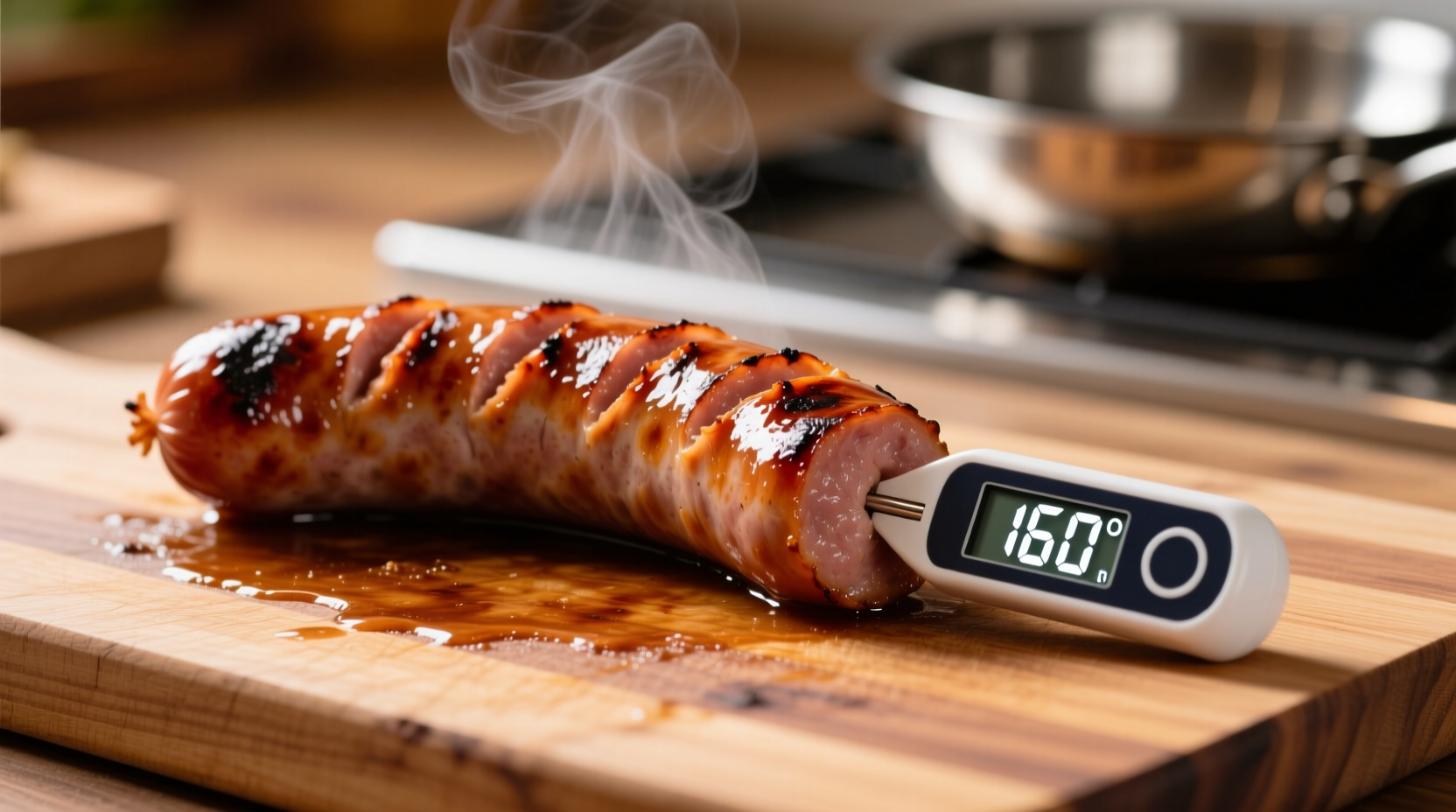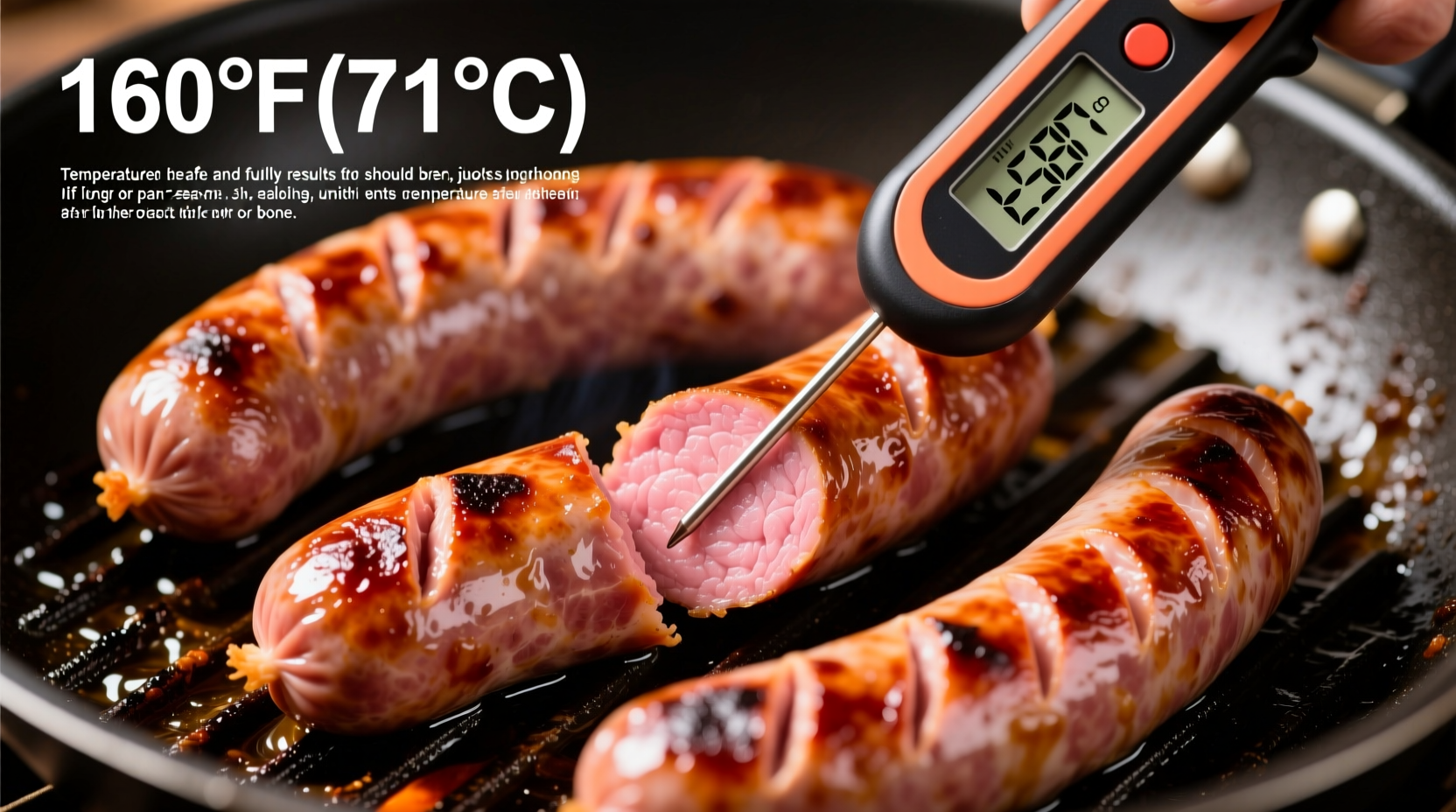Nothing ruins a backyard barbecue faster than serving undercooked brats or dry, overcooked sausages. Getting the temperature right isn't just about taste—it's a critical food safety requirement that protects you and your guests from foodborne illness. Whether you're grilling for game day or hosting a summer cookout, understanding the precise temperature brats need to reach ensures perfect results every time.
The Science Behind Bratwurst Cooking Temperatures
Bratwurst, typically made from pork (sometimes with veal or beef), contains proteins that require specific heat levels to become safe for consumption. When raw pork reaches 160°F (71°C), harmful pathogens like Salmonella and E. coli are destroyed almost instantly. This temperature threshold isn't arbitrary—it's based on extensive food safety research conducted by government agencies.
Unlike steak, where you might prefer medium-rare at 135°F, ground meats like brats require higher temperatures because the grinding process distributes surface bacteria throughout the product. This fundamental difference explains why brats need higher temperatures than whole cuts of meat.
| Meat Type | Safe Internal Temperature | Time at Temperature |
|---|---|---|
| Bratwurst (pork) | 160°F (71°C) | Instant |
| Chicken | 165°F (74°C) | Instant |
| Beef Steak | 145°F (63°C) | 3 minutes |
| Ground Beef | 160°F (71°C) | Instant |
How Temperature Requirements Have Evolved
Food safety guidelines for cooking temperatures have evolved significantly over time. In the 1990s, the USDA recommended cooking pork to 170°F (77°C), which often resulted in dry, tough meat. Modern research revealed that 160°F is sufficient to eliminate pathogens while preserving moisture and flavor. This change reflects improved understanding of food microbiology and advances in meat production safety.
The current standard of 160°F for pork products like brats comes from the USDA Food Safety and Inspection Service, which continuously reviews scientific evidence to update recommendations. The FDA Food Code also aligns with this temperature for ground pork products.
Step-by-Step: Achieving Perfect Bratwurst Temperature
1. Pre-Heat Your Cooking Surface
Whether grilling or pan-searing, pre-heat your cooking surface to medium heat (around 325-350°F). Too high causes burnt exteriors before interiors reach safe temperatures; too low leads to uneven cooking.
2. Monitor Internal Temperature, Not Time
Cooking time varies based on brat size, cooking method, and starting temperature. Instead of relying on time ("cook for 15 minutes"), use an instant-read thermometer to check progress. Insert the thermometer into the thickest part of the brat, avoiding contact with the casing.
3. The Critical Temperature Zones
- 120-130°F: Early cooking stage—brats are still raw
- 140-150°F: Brats begin to firm up but remain unsafe
- 160°F: Target zone—safe to eat with optimal juiciness
- 170°F+: Overcooked—excessive moisture loss, tough texture
4. Resting Period
Remove brats from heat at 155-158°F, as carryover cooking will raise the temperature 2-5 degrees during the 3-5 minute resting period. This prevents overshooting your target temperature.

Common Temperature Mistakes and How to Avoid Them
Mistake #1: Guessing Doneness by Color
Brats often appear browned at 140°F—well below the safe temperature. Relying on color leads to undercooked sausages. Always verify with a thermometer.
Mistake #2: Using the Wrong Thermometer
Cheap dial thermometers can be inaccurate by 5-10 degrees. Invest in a digital instant-read thermometer (recommended by USDA) for precise readings. Test accuracy by placing in ice water (should read 32°F) or boiling water (212°F at sea level).
Mistake #3: Improper Thermometer Placement
Inserting the thermometer near the casing or at an angle gives false readings. Center the probe in the thickest part of the meat for accuracy.
Special Considerations for Different Cooking Methods
While the target temperature remains constant at 160°F regardless of cooking method, different techniques require specific approaches:
- Grilling: Cook over indirect heat after searing to prevent exterior burning before interior reaches temperature
- Boiling/Par-cooking: Never boil brats before grilling—this washes away flavor. If pre-cooking, simmer gently in beer or broth at 180°F (not boiling) until they reach 150°F
- Oven Roasting: Bake at 350°F, checking temperature after 20 minutes
- Cast Iron: Maintain consistent medium heat to avoid hot spots causing uneven cooking
What If Brats Don't Reach 160°F?
If your brats measure below 160°F:
- Return to heat source immediately
- Check temperature every 30-60 seconds
- Avoid piercing with fork (causes juice loss)—use tongs for turning
- If serving guests, consider providing a "cook-to-order" station with thermometer access
Remember: When in doubt, cook it out. Better slightly overcooked brats than food poisoning. The 160°F standard exists for good reason—following it protects vulnerable individuals like children, elderly guests, and those with compromised immune systems.
Temperature Troubleshooting Guide
Encountering issues with bratwurst temperature? Here's how to address common problems:
- Exterior burnt before interior cooks: Lower heat, move to indirect zone, or finish in 300°F oven
- Brats splitting open: Prick casing gently with fork before cooking to release steam
- Inconsistent temperatures between brats: Rotate positions on grill, use uniform-sized sausages
- Thermometer reads differently in each brat: Check multiple spots; some areas may cook faster











 浙公网安备
33010002000092号
浙公网安备
33010002000092号 浙B2-20120091-4
浙B2-20120091-4